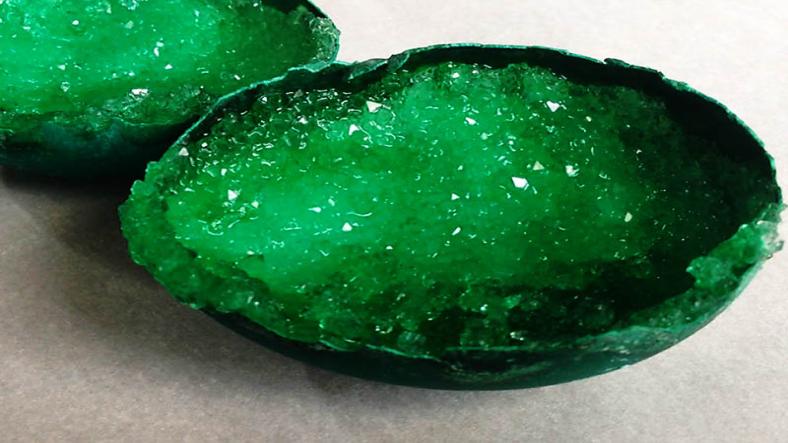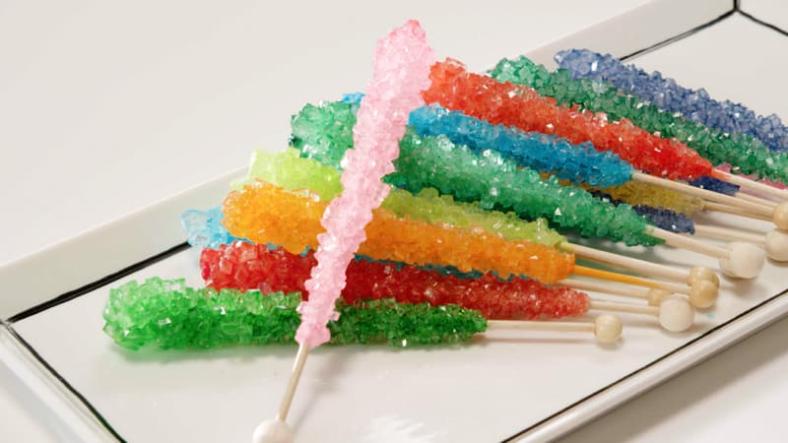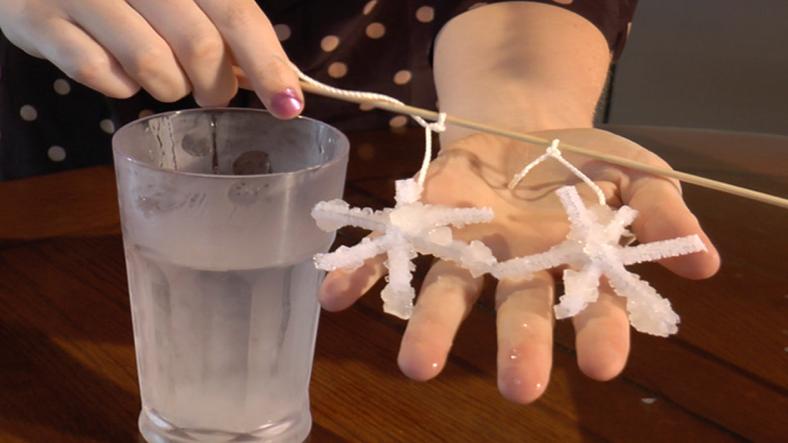Creating alum crystal geodes is a captivating and educational science experiment that allows children to observe crystal formation and learn about solubility, saturation and crystallization.
Here's a step-by-step guide:
Materials:
- Alum powder (aluminum potassium sulfate)
- Eggshells or small hollow egg-shaped molds
- Water
- Food coloring (optional)
- String or fishing line
- Scissors
- Stirring spoon
- Saucepan or microwave-safe container
- Small paintbrush (optional)
Procedure:
- Prepare the Eggshells or Molds:
- Clean and dry the eggshells thoroughly. Alternatively, use small hollow egg-shaped molds made of plastic or silicone.
- Optional: Use a small paintbrush to apply a thin layer of white glue to the inside of the eggshells or molds. This helps the crystals adhere better.
- Create the Alum Solution:
- Heat water in a saucepan or microwave-safe container until it's hot but not boiling.
- Gradually add alum powder to the hot water, stirring continuously, until no more alum dissolves. This creates a supersaturated alum solution.
- Optional: Add a few drops of food coloring to the solution to create colored crystals. Stir well to mix.
- Prepare the String or Fishing Line:
- Cut a piece of string or fishing line long enough to hang inside the eggshells or molds. Tie one end of the string to a small weight (such as a paperclip) to keep it submerged in the alum solution.
- Lower the string into each eggshell or mold, ensuring that it hangs freely and does not touch the sides or bottom.
- Carefully pour the alum solution into each eggshell or mold, covering the string completely. Make sure the string remains suspended in the solution.
- Place the eggshells or molds in a cool, undisturbed location where they won't be disturbed. Allow several days to a week for crystals to form. You should start to see crystal growth within a day or two.
- Check the progress of the crystal growth regularly. Encourage children to observe and document any changes they see.
- Once the crystals have reached the desired size, carefully remove the string from the eggshells or molds. Allow the crystals to dry completely before handling or displaying.
Explanation:
As the alum solution cools, the solubility of the alum decreases, causing the excess alum to come out of the solution and crystallize on the string and inside the eggshells or molds. The seed crystals provided by the string promote crystal growth.
Tips:
- Experiment with different colors and shapes by using various food coloring and molds.
- Encourage children to make predictions about how long it will take for crystals to form and compare their observations with their predictions.
- Discuss the science behind crystal formation and how it relates to concepts such as solubility and saturation.
Creating alum crystal geodes is not only a fascinating experiment but also a beautiful and decorative project that children can proudly display.
Thanks for reading the article, for more Science & Technology related articles read and subscribe to peoples blog articles.















